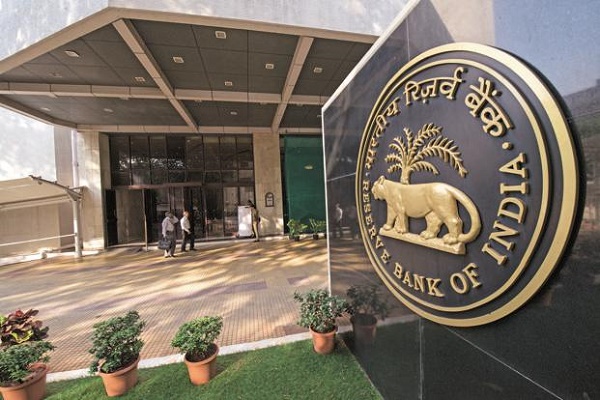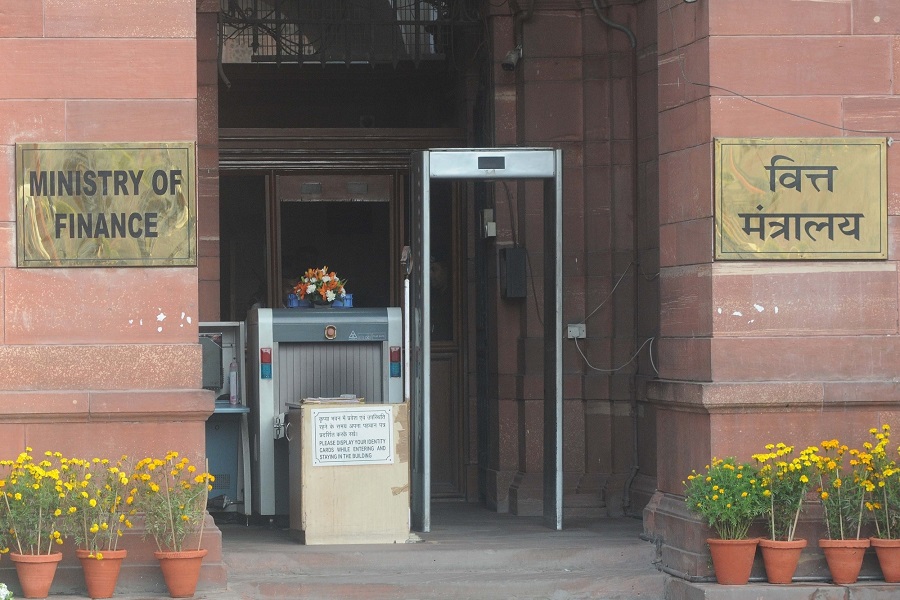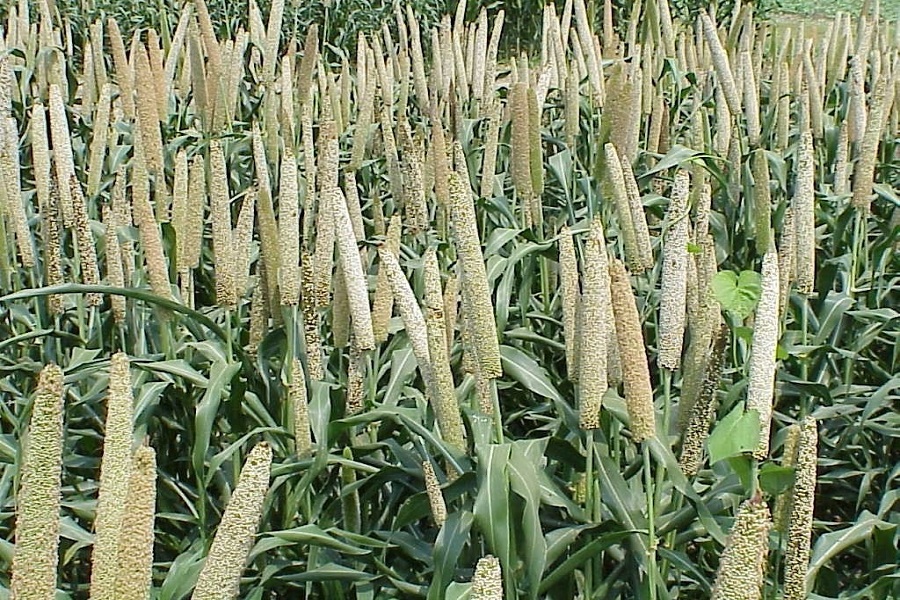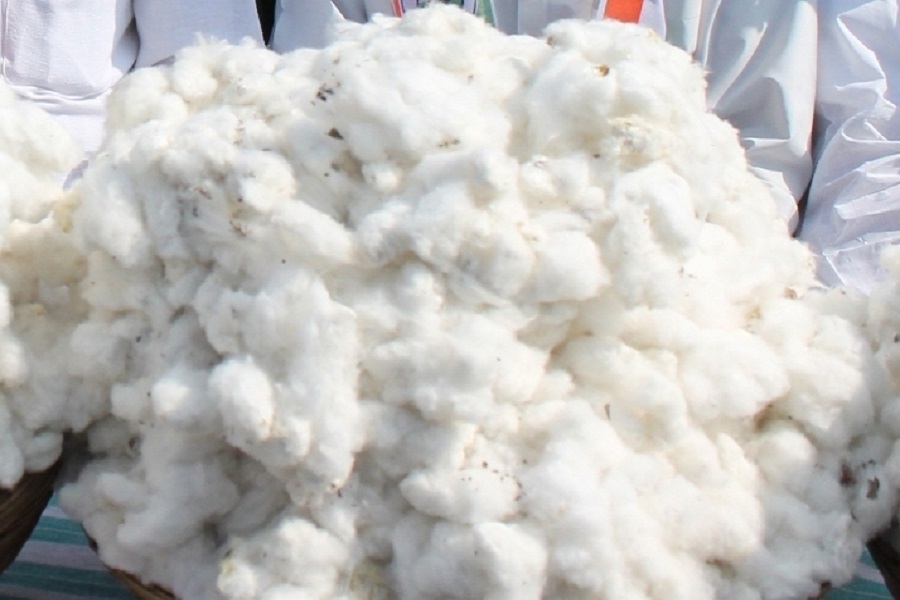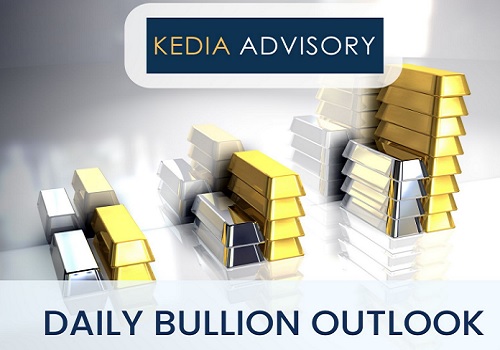Silver trading range for the day is 78330-86000 - Kedia Advisory

Gold
Gold prices dropped by 2.16%, settling at 67,462 as investors adjusted their positions in anticipation of U.S. economic data that could provide more clarity on the Federal Reserve's potential interest rate cuts. The U.S. GDP grew by an annualized 2.8% in the second quarter, surpassing market expectations of 2% and accelerating from the previous period's 1.4% growth. Despite the robust GDP figures, underlying inflation indicators remain significantly above the Federal Reserve's target, suggesting that any forthcoming rate cuts may be moderate. Markets are fully pricing in a rate cut by the Fed in September, with two more reductions expected by year-end. In other developments, India, the world's second-largest gold consumer, is expected to see increased physical demand following the government's reduction of its gold import tax from 15% to 6%. Asian physical gold demand remained weak, with customers hesitant to purchase despite substantial discounts, preferring to capitalize on record-high bullion prices instead. In India, dealers offered discounts of up to $65 an ounce over official domestic prices, the highest in 28 months, compared to $31 last week. Chinese dealers provided discounts of up to $6 an ounce on international spot prices, the lowest in over two years, contrasting with last week's premiums of $8-$19. Technically, the gold market is experiencing long liquidation, as evidenced by a 12.82% drop in open interest, settling at 8,423. Prices fell by 1,490 rupees, indicating a bearish trend. Gold is currently supported at 67,205, with further support at 66,950. On the upside, resistance is expected at 67,910, and a move above this level could see prices testing 68,360.
Trading Ideas:
* Gold trading range for the day is 66950-68360.
* Gold slid as investors squared positions to focus on U.S. economic data
* The US GDP expanded by an annualized 2.8% in the second quarter, well above market expectations of 2%
* China's net gold imports via Hong Kong in June down 18% m/m
Silver
Silver prices experienced a significant decline of 4.2%, settling at 81,331 due to the fluctuating dollar index as traders assessed key economic data. The U.S. economy demonstrated stronger-than-expected growth in the second quarter, with a 2.8% annualized rate increase in GDP, as reported by the Commerce Department's Bureau of Economic Analysis. Despite substantial rate hikes by the Federal Reserve in 2022 and 2023, the U.S. economy remains robust, buoyed by a resilient labor market even though the unemployment rate has risen to a 2-1/2-year high of 4.1%. Additionally, the Labor Department reported a larger-than-expected decrease in new applications for unemployment benefits, with a drop of 10,000 to a seasonally adjusted 235,000 for the week ending July 20. This reduction is partly attributed to the fading impact of weather-related distortions and temporary automobile plant closures. The previous week saw a rise in claims due to disruptions from Hurricane Beryl and retooling closures in the automobile sector. In a surprising move, China's central bank reduced its one-year medium-term lending facility rate by 20 basis points to 2.3%, the most significant cut since April 2020. This unexpected rate cut aims to stimulate economic activity amid global economic uncertainties. From a technical perspective, the silver market is experiencing fresh selling pressure, with a 6.52% increase in open interest, bringing it to 29,188. Prices have fallen by 3,563 rupees, indicating a bearish trend. Currently, silver is receiving support at 79,830, and if this level is breached, it could test 78,330. On the upside, resistance is anticipated at 83,665, with a potential move above this level leading to a test of 86,000.
Trading Ideas:
* Silver trading range for the day is 78330-86000.
* Silver dropped as dollar index cuts early losses as trader’s digest key economic data.
* Fed expected to start cutting interest rates in September, with more reductions expected by year-end.
* Demand weakness in China and India's lowered import duties on gold and silver.
Crudeoil
Crude oil prices increased by 0.78%, settling at 6,572, driven by strong U.S. economic data that bolstered expectations for higher crude demand. The U.S. economy's robust performance in Q2, indicating potential interest rate cuts by the Federal Reserve in September, contributed to this optimism. However, the gains were tempered by concerns over declining oil imports from China, driven by sluggish economic growth and reduced refinery activity. Further limiting the upside were advancing ceasefire talks between Israel and Hamas, which could alleviate supply threats and put downward pressure on prices. On the international front, Russia's crude oil production exceeded OPEC+ quotas in June, but Deputy Prime Minister Alexander Novak reassured that this overproduction was minor and expected the upcoming OPEC+ JMCC meeting to be constructive. Meanwhile, India's crude oil imports in June fell to their lowest level since February due to the monsoon season and refinery maintenance. In the U.S., crude oil inventories fell by 3.741 million barrels in the week ending July 19, surpassing market expectations of a 2.05 million draw. This marks the fourth consecutive week of inventory declines. Additionally, crude stocks at the Cushing, Oklahoma, delivery hub decreased by 1.708 million barrels, while gasoline and distillate stockpiles also saw significant drops. Technically, the crude oil market is under short covering, indicated by a 13.05% drop in open interest to 7,054 as prices rose by 51 rupees. Crude oil is currently supported at 6,443, with further support at 6,315. On the upside, resistance is anticipated at 6,639, and a move above this level could see prices testing 6,707.
Trading Ideas:
* Crudeoil trading range for the day is 6315-6707.
* Crude oil gains amid strong U.S. economic data stoked expectations for higher crude demand
* Concerns about China's declining oil imports and refinery activity due to sluggish economic growth weighed on the market.
* US economy showed stronger-than-expected growth in Q2, suggesting potential Fed interest rate cuts in September, which could boost oil demand.
Naturalgas
Natural gas prices fell by 3.57%, settling at 175.8 due to rising output and forecasts predicting lower demand for the coming week than initially expected. Despite smaller injections into storage over the past 10 weeks, gas reserves remain about 17% above the seasonal average. This surplus persists despite earlier production cuts by several producers when futures prices plummeted to 3-1/2 year lows in February and March. According to financial firm LSEG, gas output in the Lower 48 states increased to an average of 102.4 billion cubic feet per day (bcfd) in July, up from 100.2 bcfd in June and a 17-month low of 99.4 bcfd in May. This rise in output is nearing the record high of 105.5 bcfd set in December 2023. With expectations of more wind power in the upcoming week, LSEG forecasts a slight decrease in average gas demand in the Lower 48 states, from 105.5 bcfd this week to 105.3 bcfd next week. This week's demand forecast was higher than previously anticipated, while next week's projection was revised downward. Additionally, U.S. utilities added 22 billion cubic feet of gas into storage during the week ending July 19, surpassing market expectations of a 15 billion cubic feet increase. From a technical perspective, the natural gas market is experiencing fresh selling pressure, as evidenced by a 19.08% increase in open interest to 39,462, while prices dropped by 6.5 rupees. Currently, natural gas has support at 172.4, with further support at 169. On the upside, resistance is expected at 181.9, and a move above this level could see prices testing 188.
Trading Ideas:
* Naturalgas trading range for the day is 169-188.
* Natural gas eased on rising output and forecasts for less demand next week.
* US utilities added 22 billion cubic feet of gas into storage
* Gas output in the Lower 48 states rose to an average of 102.4 billion cubic feet per day (bcfd) so far in July
Copper
Copper prices declined by 0.43%, settling at 796, due to persistent demand concerns in China, which continue to pressure prices amid a lack of strong policy measures to boost the economy and revive the property sector. Although China's central bank made a surprise cut to its one-year medium-term lending facility rate by 20 basis points to 2.3%, the largest cut since April 2020, it hasn't sufficiently boosted confidence in copper demand. The copper premium, reflecting the extra amount Chinese buyers pay on top of LME copper prices, surged to $25 a ton, the highest in over three months, indicating some demand pressure. On the supply side, copper inventories in LME warehouses have risen to the highest since September 2021, while those in China's bonded warehouses reached the highest since May 2023. The global refined copper market showed a surplus of 65,000 metric tons in May, up from 11,000 metric tons in April, according to the International Copper Study Group (ICSG). China's unwrought copper imports in June fell to a 14-month low of 436,000 metric tons, a 3% decline from the previous year, primarily due to high global prices and weak domestic demand. Technically, the copper market is under fresh selling pressure, with a 2.02% increase in open interest to 13,210, while prices dropped by 3.4 rupees. Copper is currently supported at 786.2, with further support at 776.2. On the upside, resistance is expected at 804.1, and a move above this level could see prices testing 812.
Trading Ideas:
* Copper trading range for the day is 776.2-812.
* Copper dropped as demand concerns in China continued to pressure prices.
* China's central bank delivered a surprise and unscheduled cut to its one-year medium-term lending facility rate.
* Copper premium, surged to $25 a ton, its highest in over three months.
Zinc
Zinc prices decreased by 0.45%, settling at 252.35 due to growing concerns over demand in China. In June, China's refined zinc production rose to 545,800 metric tons, a 1.81% increase month-over-month but a 1.2% decline year-over-year. Despite this monthly increase, the first half of 2024 saw a 1.39% year-over-year decline in zinc output, totaling 3.182 million metric tons. The domestic zinc alloy production in June was 93,000 metric tons, a decrease of 1,800 metric tons from May. Higher-than-expected production in Guangxi, Gansu, and Guizhou contributed to the increased refined zinc output. Additionally, some smelters in Shaanxi, Gansu, Yunnan, and Guizhou resumed production after maintenance, offsetting reductions in other regions due to maintenance shutdowns. However, the broader market sentiment remains cautious due to concerns about China's economic performance and lack of substantial policy measures to stimulate growth. Meanwhile, MMG Ltd's Dugald River zinc mine in Australia has halted operations for about two months due to mill repairs. On the inventory front, zinc stocks in London Metal Exchange (LME) warehouses increased by 9% to the highest level in nearly three months, indicating a surplus in the market. Despite this recent rebound, LME zinc stocks had previously declined by 13% since peaking at 276,100 tons in late February. Technically, the zinc market is experiencing fresh selling pressure, as evidenced by a 10.21% increase in open interest to 1,889. Prices fell by 1.15 rupees. Zinc currently has support at 247.9, with further support at 243.4. On the upside, resistance is expected at 256.1, and a move above this level could see prices testing 259.8.
Trading Ideas:
* Zinc trading range for the day is 243.4-259.8.
* Zinc prices dropped on growing concern over demand in China.
* In June, China's refined zinc production was 545,800 mt, up 9,700 mt or 1.81% MoM
* Zinc inventories in warehouses registered with the London Metal Exchange rebounded 9% to their highest level in nearly three months
Aluminium
Aluminium prices fell by 0.89%, settling at 211.4 amid concerns about demand due to the lack of fresh stimulus in China. The metal markets had been hoping for signs that the Chinese government would address the country's prolonged property slump, which is a major driver of industrial metals demand. However, no new significant measures have been announced. Global primary aluminium output increased by 3.2% year-on-year in June to 5.94 million metric tons, according to data from the International Aluminium Institute (IAI). For the first half of 2024, global production rose by 3.9% to 35.84 million metric tons, driven mainly by higher output in China. China's aluminium production grew by 7% in the first half of the year, reaching 21.55 million metric tons, with June's production being the highest in nearly a decade. The IAI estimated China's production at 21.26 million metric tons for January-June, marking a 5.2% increase. In other regions, aluminium output in Western and Central Europe rose by 2.2% to 1.37 million metric tons, while production in Russia and Eastern Europe increased by 2.4% to 2.04 million metric tons. The Gulf region also saw a slight increase in production by 0.7% to 3.10 million metric tons. Technically, the aluminium market is under fresh selling pressure, as indicated by an 8.64% increase in open interest to 4793 contracts, while prices declined by 1.9 rupees. Aluminium is currently supported at 210.4, with further support at 209.4. On the upside, resistance is expected at 213.1, and a move above this level could see prices testing 214.8.
Trading Ideas:
* Aluminium trading range for the day is 209.4-214.8.
* Aluminium prices dropped amid concerns about demand
* Global primary aluminium output rose by 3.9% year-on-year to 35.84 million metric tons in the first half of 2024
* Global aluminium output rises 3.2% year on year in June – IAI
Cottoncandy
Cotton candy prices fell by 0.18%, settling at 56,550 due to profit booking after recent gains. The decline is attributed to a significant reduction in cotton planting area in key regions. This year, the cotton acreage in Punjab, Haryana, and Rajasthan has dropped markedly from last year's 16 lakh hectares to 10.23 lakh hectares. Specifically, Punjab saw a reduction to 97,000 hectares from a typical 7.58 lakh hectares, Rajasthan's cotton area decreased to 4.75 lakh hectares from 8.35 lakh hectares, and Haryana's area shrank to 4.50 lakh hectares from 5.75 lakh hectares. The drop in cotton acreage is contributing to tighter supplies, which is supporting prices. Additionally, delays in cotton shipments from the US and Brazil have heightened demand for Indian cotton from mills in neighboring countries. Firm cottonseed prices are also sustaining cotton prices, even as sowing for the kharif 2024 season begins in southern states like Karnataka, Telangana, and Andhra Pradesh, which have started receiving monsoon rains. For the 2024/25 season, US cotton projections show higher beginning and ending stocks compared to last month, with an increase of 400,000 bales in ending stocks to 4.1 million bales, or 28% of use. In Rajkot, a major spot market, prices ended at 27,322.3 rupees, down by 0.51%. Technically, the market is under fresh selling pressure, evidenced by a 155.38% increase in open interest to 166 contracts, while prices have dropped by 100 rupees. Cotton candy is currently supported at 56,170, with further support at 55,790. Resistance is expected at 56,960, with a move above this level potentially testing 57,370.
Trading Ideas:
* Cottoncandy trading range for the day is 55790-57370.
* Cotton dropped on profit booking after prices gained as area under cotton in North India drops
* China's agriculture ministry raised its forecast for cotton imports in the 2023/24 crop year by 200,000 metric tons
* The 2024/25 U.S. cotton projections show higher beginning and ending stocks compared to last month.
* In the global 2024/25 cotton balance sheet, beginning stocks, production and consumption are increased.
Turmeric
Yesterday, turmeric prices declined by 1.56% to settle at 15,748 due to reports of increased sowing. However, the downside was limited as farmers held back stocks in anticipation of a further price rise. Farmers receiving fair prices for their produce are likely to increase turmeric sowing across all producing states this year. Turmeric sowing in Erode is reported to be double compared to last year, and sowing in Maharashtra, Telangana, and Andhra Pradesh is estimated to be 30-35% higher than the previous year. Last year, turmeric was sown in about 3-3.25 lakh hectares in India, with an estimated increase to 3.75-4 lakh hectares this year. In addition to lower sowing last year, unfavorable weather also impacted the crop, resulting in an estimated production of 45-50 lakh bags in 2024. There was also an outstanding stock of 35-38 lakh bags. Despite the increased sowing during the current season, the upcoming turmeric crop is expected to be around 70-75 lakh bags, with the outstanding stock remaining zero. Turmeric exports during April-May 2024 dropped by 20.03% to 31,523.94 tonnes compared to 39,418.73 tonnes during the same period in 2023. In May 2024, around 17,414.84 tonnes of turmeric were exported, showing a 23.43% increase from April 2024. Technically, the market is under long liquidation, with open interest dropping by 0.7% to settle at 15,888 while prices fell by 250 rupees. Turmeric is currently supported at 15,640, with a potential test of 15,534 levels if this support is breached. Resistance is likely at 15,914, and a move above this level could see prices testing 16,082.
Trading Ideas:
* Turmeric trading range for the day is 15534-16082.
* Turmeric prices settled down amid news of increased sowing.
* Turmeric sowing on the Erode line is reported to be double as compared to last year.
* Turmeric was sown in about 3/3.25 lakh hectares in the country last year, which is estimated to increase to 3.75/4 lakh hectares this year.
* In Nizamabad, a major spot market, the price ended at 16363.4 Rupees dropped by -1.15 percent.
Jeera
Yesterday, Jeera prices surged by 2.47% to settle at 26,725, driven by robust domestic and export demand alongside tight global supplies. However, the upside was somewhat limited due to the anticipation of higher production levels. Farmers holding back their stocks in expectation of better prices also supported the price increase. This season, Jeera production is expected to be 30% higher, reaching 8.5-9 lakh tonnes, thanks to a significant rise in cultivation area. In Gujarat, the sowing area increased by 104%, and in Rajasthan by 16%. Global production of Jeera has also seen significant increases, notably in China, where output soared to over 55-60 thousand tons from the previous 28-30 thousand tons. High prices from the prior season encouraged increased production in Syria, Turkey, and Afghanistan, with new supplies expected in June and July. Turkey anticipates producing 12-15 thousand tons, while Afghanistan's output could potentially double, weather permitting. As these new supplies enter the market, Jeera prices are expected to decline. Jeera exports during April-May 2024 rose by 43.50% to 58,943.84 tonnes compared to 41,076.27 tonnes during the same period in 2023. In May 2024, around 20,916.88 tonnes of Jeera were exported, showing a 44.99% drop from April 2024 and a 15.64% decline from May 2023. Technically, the market is under short covering, with open interest dropping by 0.44% to settle at 26,090 while prices rose by 645 rupees. Jeera is currently supported at 26,180, with a potential test of 25,620 levels if this support is breached. Resistance is expected at 27,210, and a move above this level could see prices testing 27,680.
Trading Ideas:
* Jeera trading range for the day is 25620-27680.
* Jeera gains amid robust domestic and export demand besides tight global supplies.
* China's cumin output soared to over 55-60 thousand tons from the previous 28-30 thousand tons.
* Turkey anticipates producing 12-15 thousand tons, while Afghanistan's output could double.
* In Unjha, a major spot market, the price ended at 26291.7 Rupees dropped by -0.55 percent.
Views express by all participants are for information & academic purpose only. Kindly read disclaimer before referring below views.





